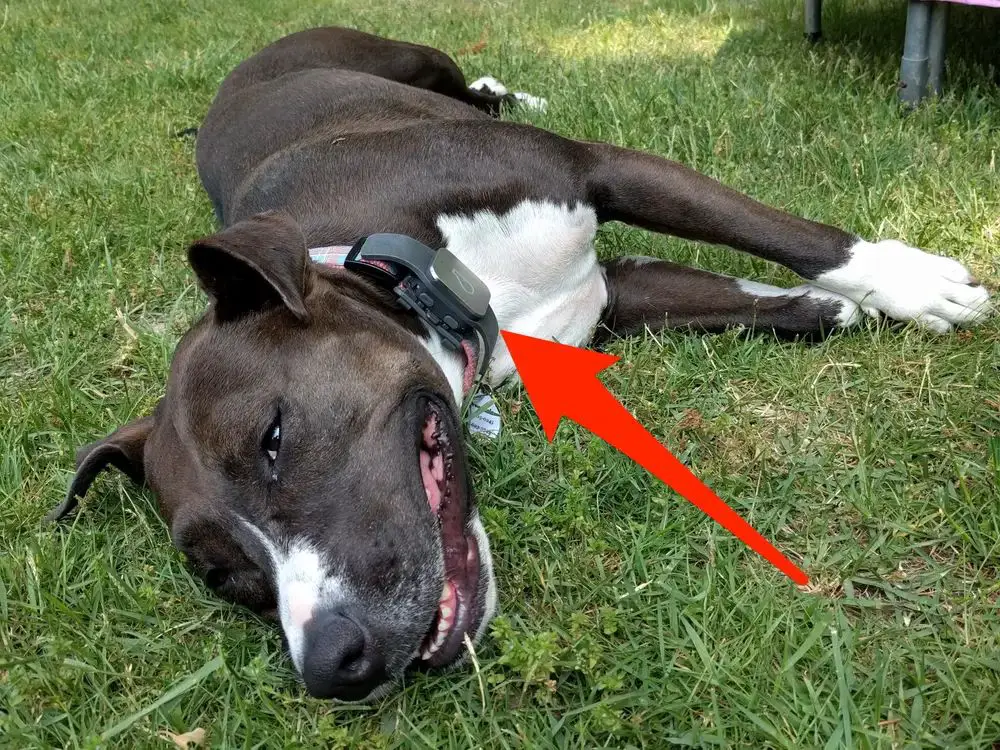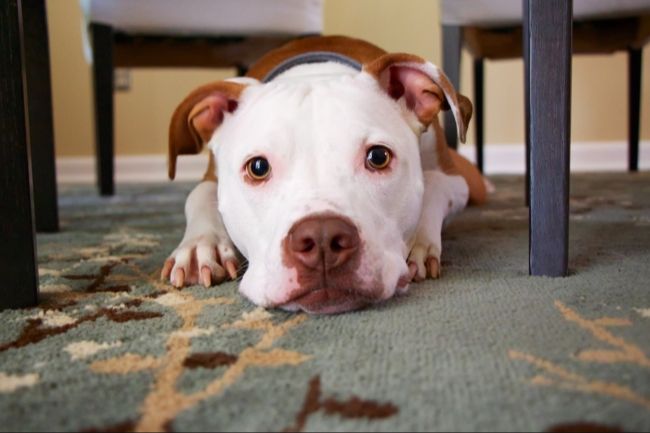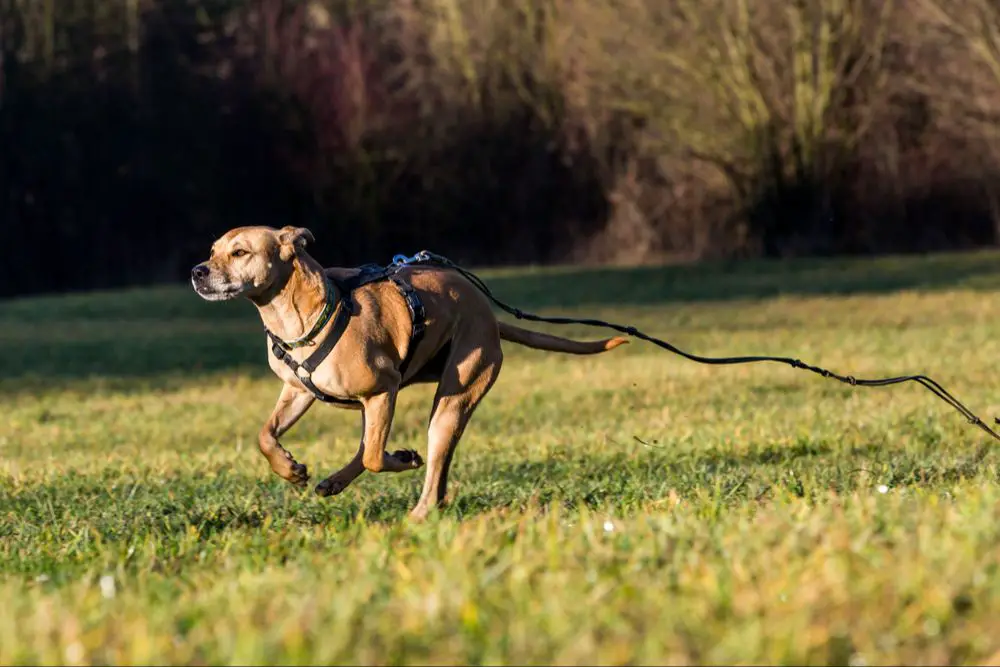Introduction
Dogs running away is an unfortunately common occurrence that most dog owners will experience at some point. Even the most loyal canine companions can end up wandering off, leaving their owners stressed and worried. According to the American Humane Society, around 10 million dogs and cats go missing or are stolen in the U.S. every year.
There are many reasons why man’s best friend may unexpectedly run off, including boredom, fear, prey drive, and natural wanderlust. While some breeds are more prone to roaming than others, any dog can potentially bolt under the right circumstances. Preventing your dog from running away requires understanding their personality and natural inclinations, proper socialization and training, and taking sensible precautions.
This article will explore the breeds most likely to run off, why dogs run away in the first place, and provide tips on keeping your pooch safely by your side. With knowledge and vigilance, you can reduce the chances of your dog ever wandering too far.
Breeds Most Likely to Run Away
Certain breeds of dogs are more prone to running away than others. This is often due to traits that have been bred into them over generations.
Hounds such as Beagles, Bloodhounds, and Basset Hounds have a strong prey drive and keen sense of smell that leads them to follow interesting scents for long distances. Their strong prey drive can override any training when they catch an intriguing scent. According to Good Housekeeping, Beagles top the list as the breed most likely to run off.[1]

Terriers like Jack Russells and West Highland White Terriers were originally bred to hunt vermin. They can have a stubborn, independent nature and a tendency to wander and explore. Their boldness gives them confidence to travel far from home.[2]
Northern breeds such as Huskies and Malamutes were bred to travel long distances pulling sleds. They have a strong desire to roam and difficulty settling in one place. Due to their thick coats, they can handle cold weather and may not feel compelled to return home.[3]
Herding breeds like Collies and German Shepherds have an instinct to patrol and control the movements of other animals. They may try to herd people, cars, or other pets, chasing them beyond their home’s boundaries.
Sporting breeds such as Pointers, Spaniels, and Retrievers have high energy and stamina that make them prone to roaming while exploring and hunting. They love running and chasing anything that moves.
Reasons Dogs Run Away
Dogs run away for various reasons, often due to behavioral issues that can be corrected. The most common causes of dogs running away are boredom, fear, high prey drive, wanderlust, and poor socialization.[https://www.webmd.com/pets/dogs-stop-running-away] Understanding why your dog runs away can help prevent it from happening again.
Boredom
Dogs need mental stimulation and physical activity. If your dog is frequently bored, it may escape simply for something to do. Make sure your dog gets adequate daily exercise and playtime. Provide interactive toys and use puzzle feeders for mental enrichment. Attend training classes or try dog sports like agility to challenge your dog both physically and mentally.[https://www.thesprucepets.com/why-dogs-run-away-4587466]
Fear
Dogs may run due to fear or anxiety. Loud noises like thunder or fireworks can startle some dogs so badly they bolt. If your dog is shy, cautious, or often fearful, work on socialization and desensitization. Introduce new experiences gradually and ensure your dog feels safe. Medication or natural supplements may help extremely anxious dogs.
Prey Drive
Dogs with high prey drive may dash after squirrels, cats, rabbits, and other small animals. Keep your dog leashed or in a fenced area when outdoors. Teach and reinforce the “leave it” command. Consider a basket muzzle when in unfenced areas to prevent chasing. Prey drive is innate in some breeds but can be managed with training.
Wanderlust
Some dogs have a strong innate urge to roam and explore. Breeds like Siberian Huskies were bred to travel long distances. Wanderlusting dogs need extra containment measures. Install tall fencing, add a roof, or use a trolley system to give your dog outdoor access while preventing roaming.
Lack of Socialization
Puppies require extensive socialization to new people, places, sights, and sounds. If socialization is inadequate, dogs may flee situations that make them nervous or uncomfortable. Socialize puppies carefully and continue socialization into adulthood. For shy or fearful adult dogs, use desensitization and counterconditioning to improve social skills.
Reducing Boredom

Boredom is one of the most common reasons dogs run away. Dogs are intelligent, energetic animals that need daily mental and physical stimulation. A lack of exercise and mental enrichment can lead to behavioral problems like destructive chewing, barking, hyperactivity, and escaping the yard.
There are several ways to combat boredom and provide your dog with the stimulation they need:
More Exercise
Make sure your dog gets adequate daily walks and playtime. Dogs need 45-60 minutes of exercise per day. Taking your dog on longer walks, hikes, runs, or to the dog park can help tire them out both mentally and physically. Varying routes and allowing sniff and explore time prevents walks from becoming mundane. According to the AKC, exercise is mentally stimulating and a great cure for doggy boredom. https://www.akc.org/expert-advice/training/bored-dogs-how-to-recognize-doggy-boredom-and-help/
Stimulating Toys
Provide interactive puzzle toys that challenge your dog mentally and make them “work” for treats or kibble. Rotating different types of toys keeps things interesting. Play fetch and games like tug-of-war for added physical activity. According to AtoZ Vet, tug-of-war is an excellent cure for dog boredom. https://www.atozvet.com/7-ways-cure-dog-boredom/
Training
Teaching new tricks and commands exercises your dog’s brain. Practice obedience skills daily using positive reinforcement techniques. Attending training classes allows social interaction and mental stimulation. Always end sessions on a positive note to avoid frustration.
Managing Fear
Fear and anxiety can cause dogs to run away from situations that make them uncomfortable. There are several techniques to help manage your dog’s fear so they gain confidence rather than fleeing:
Desensitization training involves gradually exposing your dog to the thing that frightens them, starting at very low intensities, and rewarding calm behavior. For example, if your dog is afraid of loud noises, start by playing soft music and treating them for staying relaxed. Slowly increase the volume over multiple sessions until your dog remains calm at normal noise levels. This conditioning changes your dog’s emotional response. According to the Cornell University College of Veterinary Medicine, “a once frightening stimulus becomes a signal for good things to come” with this type of training.1

Creating a safe space at home where your dog can retreat when frightened is also important. Their crate or a comfortable corner with a bed can become a security blanket. If a storm is approaching or guests are visiting, bring your dog to their safe zone with a puzzle toy stuffed with treats to help them relax.
Satisfying Prey Drive
Hunting and chasing are natural prey drive behaviors for many dogs. Providing appropriate outlets for these instincts is essential. Some good options include:
Games for chasing and hunting: Use toys like balls, frisbees, ropes, and flirt poles for play that simulates hunting or chasing prey. You can hide toys and have your dog search for them as well. Rotate toys to keep your dog’s interest. Allow them to occasionally “catch” the toy for mental fulfillment. Sources: https://wagwalking.com/activity/activities-for-dogs-with-high-prey-drive, https://www.akc.org/expert-advice/training/channel-control-dog-prey-drive/
Outlets like agility: Let your dog run, jump, weave, and chase in a controlled setting like an agility course. The dynamic environment engages their prey drive in appropriate ways. Other options include lure coursing, flyball, or herding activities if suitable for your breed. Structure and training are key to ensuring these outlets satisfy your dog’s needs safely.
Curbing Wanderlust
Some dogs have an especially strong urge to roam and explore their surroundings. This innate wanderlust can make them prone to escaping from your property. There are several ways to curb wanderlust in dogs:
Increased Supervision – Providing more direct supervision when your dog is outside can limit opportunities for them to wander off. Consider leashing your dog or staying outside with them during potty breaks and playtime in unfenced areas.
Secured Fencing – Investing in a tall, sturdy fence with a locked gate can contain dogs with wanderlust. Burying a portion of the fence underground can also prevent digging escapes. Regularly check your fence for breaches.
Tracking Devices – Equipping your dog with a GPS collar or microchip implant allows you to locate them if they do manage to escape. However, this does not prevent the escape, just helps find them.
In addition to containment measures, ensuring your dog gets adequate exercise and stimulation can help satisfy their exploratory drives. Spending time together training and playing can curb restlessness. Consistency, patience and prevention are key when dealing with a dog inclined to wander.
Proper Socialization
Proper socialization is critical for raising a well-adjusted and happy dog. Socialization refers to exposing puppies and dogs to a wide variety of people, animals, places, sights, sounds, and experiences in a gradual, positive way. According to Longwood Veterinary Center, “Socializing your dog ensures its ability to react to the world in a healthy way, without fear or aggression.”1
The goal of socialization is to introduce dogs to novel stimuli and prevent negative reactions like fear, anxiety, or aggression. By starting socialization early, puppies can form positive associations with all types of people including children, elderly, different races, people in uniforms, etc. They should also meet other vaccinated puppies and friendly adult dogs. Socialization to new environments like parks, cars, elevators and city streets is also important.2
Socialization should be an ongoing process throughout a dog’s life. Lots of positive reinforcement and treats help puppies associate new experiences with rewards. With proper socialization, dogs become more confident, relaxed and able to handle anything they encounter.
Preventative Measures
There are several preventative measures you can take to help reduce the chances that your dog will run away, including:
Training recall – Teaching your dog a strong recall cue like “come” can help ensure they return when called, even from a distance. Start training recall in a low distraction environment and slowly work up to more challenging scenarios. Always reward with high value treats when they successfully come when called. This is one of the most important skills a dog should learn. According to AHA, dogs with stronger recall are less likely to run off.
Microchipping – Having your dog microchipped and keeping the registration info up-to-date greatly increases the chances of being reunited if they do run away. Microchips provide permanent ID and contact info that veterinarians and shelters can scan if your lost dog is found. Just be sure to register the microchip and keep your contact details current.
ID tags – ID tags are another critical way to identify your dog if they get lost. Tags should include your name, phone number, and address. Consider getting a secondary tag with an alternate phone number as well. Check the tags regularly to ensure they are still securely attached to the collar.
What to Do if Your Dog Runs Off
If your dog manages to get loose and takes off running, stay calm and take the following steps:
First, search the immediate area thoroughly, calling your dog’s name in an upbeat tone to see if you can get their attention and have them return. Check your yard, nearby streets, and parks where you typically walk your dog. Don’t chase after them, as this can make the situation worse and cause them to run farther away.

Next, contact all local shelters and rescue groups to file a lost pet report. Provide a detailed description of your dog along with a current photo. Check their intake listings frequently for any dogs matching your pet’s description. Expand your search radius up to 60 miles from your home.
Post about your missing dog on neighborhood forums like Nextdoor as well as your social media accounts. Share photos and any helpful details on where they went missing from. Offer a reward to encourage people to be on the lookout.
For prolonged disappearances, consider hiring a professional pet detective. They utilize tactics like scent tracking and surveillance cameras to pinpoint a lost pet’s trail. This can maximize your chances of being reunited.